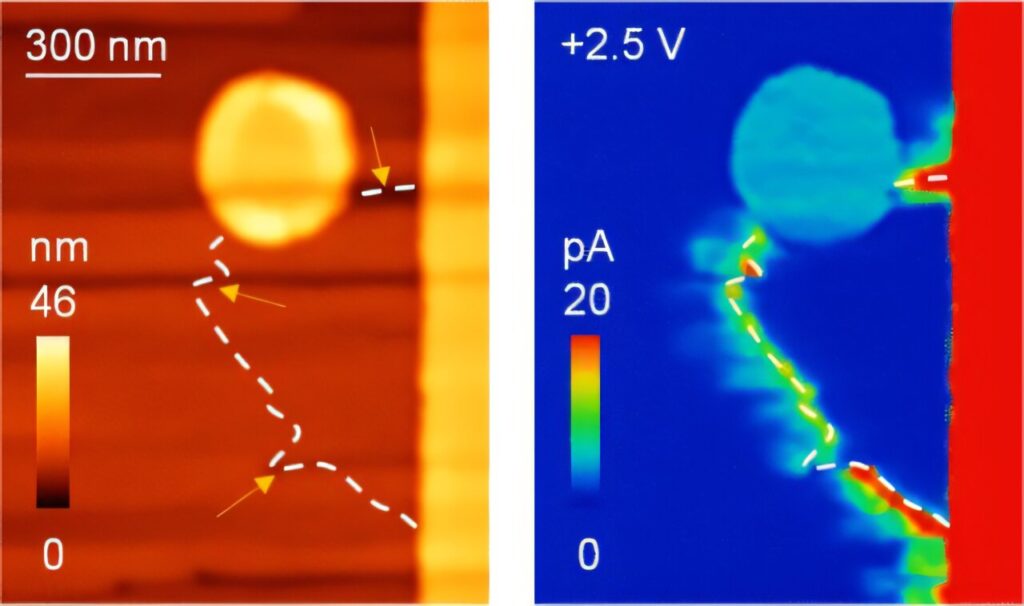Imagine a future where your phone, computer or even a tiny wearable device can think and learn like the human brain—processing information faster, smarter and using less energy.
A new approach developed at Flinders University and UNSW Sydney brings this vision closer to reality by electrically “twisting” a single nanoscale ferroelectric domain wall.
The domain walls are almost invisible, extremely tiny (1–10 nm) boundaries that naturally arise or can even be injected or erased inside special insulating crystals called ferroelectrics. The domain walls inside these crystals separate regions with different bound charge orientations.
More importantly, these tiny boundaries, despite being embedded in insulating crystals, can act as channels for regulating electron flow, and thus are capable of storing and processing information like in a human brain, says Flinders University senior lecturer in physics Dr. Pankaj Sharma, lead and corresponding author of the new article published in ACS Applied Materials & Interfaces.
Why does this matter? Devices mimicking the human brain allow for faster processing of vast amounts of information while using far less energy compared to existing digital computers, in particular, for tasks such as image and voice recognition, the researchers say.
“With this new design, these ferroelectric domain walls in crystalline ferroelectric materials are poised to power a new generation of adaptable memory devices, bringing us closer to faster, greener and smarter electronics,” says Dr. Sharma. “Our results reaffirm the promise of ferroelectric domain walls for brain-inspired neuromorphic and in-memory computing applications based on integrated ferroelectric devices.
“In our research, a single ferroelectric domain wall has been controllably injected and engineered to mimic memristor behavior. By applying electric fields, we carefully manipulate the shape and position of this single wall, causing it to bend and warp.
“This controlled movement leads to changes in the wall’s electronic properties, unlocking its ability to store and process data at different levels.”
The new study reveals how ferroelectric domain walls straddling two terminal devices can function as “memristors”—devices that can store information at varying levels and remember the history of its electrical activity—similar to synapses in a human brain.
Co-author UNSW Professor Jan Seidel, says “the key lies in the interplay between the wall’s surface pinning (where it’s fixed) and its freedom to twist or warp deeper within the material.
“These controlled twists create a spectrum of electronic states, enabling multi-level data storage, and eliminate the need for repetitive wall injection or erasure, making the devices more stable and reliable,” he says.
Using advanced microscopy and theoretical phase field modeling, this research uncovers the physics behind these warping-induced electronic transitions at the domain walls.
Co-author UNSW Professor Valanoor Nagarajan adds, “These new highly reproducible and energy-efficient domain wall devices could revolutionize neuromorphic computing, the brain-inspired systems that promise to reshape artificial intelligence and data processing.”


